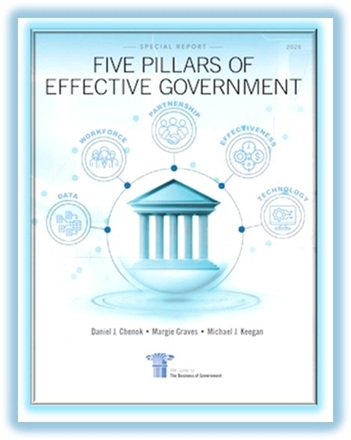Feb22

“Modelling the new way is the one key task leaders of change do not need props for, nor should they delegate this to others”
Mahatma Gandhi said, “Be the change that you wish to see in the world.” This is also very true in organisational change. Leaders need to model the new way, especially the new skills and behaviours. Just as a model can inspire us to dress or look a certain way, a leader of change can inspire their employees to imitate their good behaviour. The leaders of the organisation have to be someone the employees look up to and want to emulate during change implementation. Employees will listen to what leaders say and do. They will always be looking for alignment or gaps. If there is alignment, employees will gravitate towards the leader and copy their behaviour.
Modelling the new way is one of the key tasks leaders of change do not need props for, nor can they delegate this to others. There are three key traits required for modelling the new way:
Change Leadership Capability
Lead with Integrity
Benevolence
Change Leadership Capability: The skills required for leading day-to-day operations are very different to leading change. Organisations invest huge amounts of capital on a change, transformation or improvement initiative and then ask their leaders to lead the implementation without providing any change capability. Change Leadership Capability includes:
Lead with Integrity: One of the most important characteristics of any leader is integrity. This becomes even more critical when leading change. As a leader of change, you are leading the organisation and its employees on a change journey. The Leadership of Change® requires integrity and honesty, and the leader should have both morals and credibility. Leading with integrity includes:
Benevolence: Benevolent leaders are committed to making their organisation better and this trait complements change leadership. They are approachable and accessible but are neither wimps nor pushovers. Benevolent leaders are servant leaders, they put the needs of their employees first. Benevolence includes:
This is an extract from: Change Management Leadership - Leadership of Change® Volume 4
Blog Source: https://www.peterfgallagher.com/single-post/change-leadership-traits-to-model-the-new-way
Peter consults, speaks, and writes on the Leadership of Change®. For further reading please visit our websites: https://www.a2b.consulting https://www.peterfgallagher.com Amazon.com: Peter F Gallagher: Books, Biography, Blog, Audiobooks, Kindle
Leadership of Change® Body of Knowledge Volumes: Change Management Body of Knowledge (CMBoK) Volumes 1, 2, 3, 4, 5, 6, 7, A, B, C, D & E available on both Amazon and Google Play:
~ Leadership of Change® Volume 1 - Change Management Fables
~ Leadership of Change® Volume 2 - Change Management Pocket Guide
~ Leadership of Change® Volume 3 - Change Management Handbook
~ Leadership of Change® Volume 4 - Change Management Leadership
~ Leadership of Change® Volume 5 - Change Management Adoption
~ Leadership of Change® Volume 6 - Change Management Behaviour
~ Leadership of Change® Volume 7 - Change Management Sponsorship
~ Leadership of Change® Volume A - Change Management Gamification - Leadership
~ Leadership of Change® Volume B - Change Management Gamification - Adoption
Coming soon:
~ Leadership of Change® Volume C - Change Management Gamification - Behaviour
~ Leadership of Change® Volume D - Change Management Gamification - Sponsorship
~ Leadership of Change® Volume E - Change Management Gamification - Leadership Teams
Keywords: Leadership, Change Management, Business Strategy
 Friday’s Change Reflection Quote - Leadership of Change - Change Leaders Maintain Trust and Legitimacy
Friday’s Change Reflection Quote - Leadership of Change - Change Leaders Maintain Trust and Legitimacy The Corix Partners Friday Reading List - January 16, 2026
The Corix Partners Friday Reading List - January 16, 2026 Effective Government Is Built: A Five-Pillar Framework for Public Leaders
Effective Government Is Built: A Five-Pillar Framework for Public Leaders Tariffs, Data, and the Complexity of Compliance
Tariffs, Data, and the Complexity of Compliance NEW SPECIAL REPORT: Five Pillars of Effective Government: A Framework for Governing in an Age of Complexity
NEW SPECIAL REPORT: Five Pillars of Effective Government: A Framework for Governing in an Age of Complexity